Key Points:
- As formidable as hawks are, they are generally no match for eagles.
- Foxes may also place hawk nests under surveillance and may help themselves to a youngster learning to use its wings.
- Raccoons are not above using their excellent climbing skills to indulge in one mouthful or several of tender hatchling meat.
Hawks are prolific predators who perch on treetops and lamp posts, scouring for prey to devour. They possess strong beaks and vise-grip talons that never lose a catch. Due to their strength and ability to fly out of reach, hawks are hardly prey to other animals. Or are they?
There is a surprisingly impressive list of animals that eat hawks. Moreover, such killings are more prominent while the hawks are still young and within reach. Here are some predators who are bound to kill more than a few hawks in their lifetime.

What Eats Hawks?
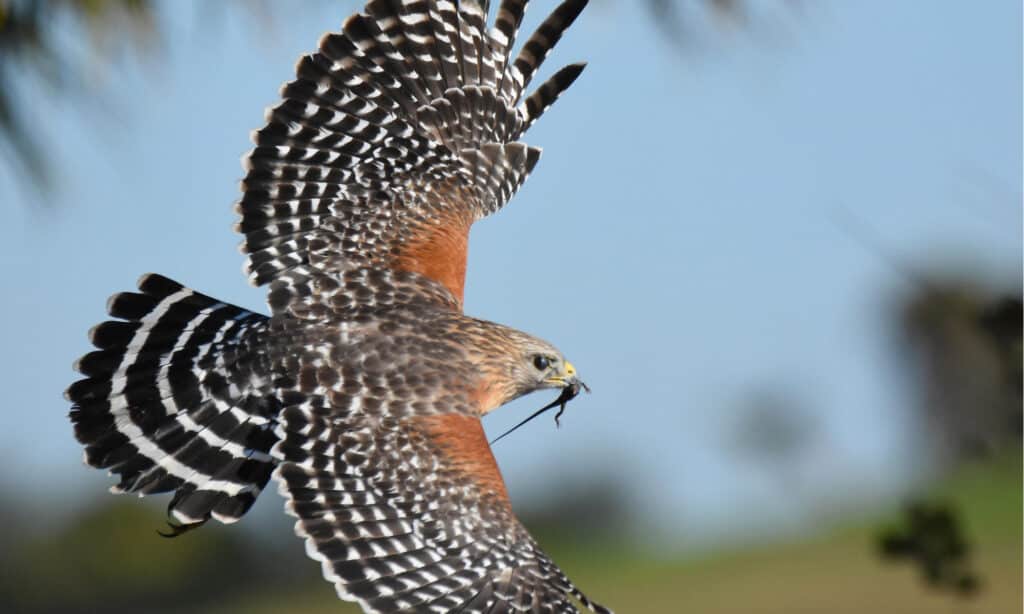
Bigger hawks, eagles, and foxes eat hawks.
©MTKhaled mahmud/Shutterstock.com
Hawks get attacked and can be eaten by hawks that are larger, eagles, owls, raccoons, foxes, and snakes. Their position on the food chain keeps them out of reach of most predators. However, hawk eggs and younger hawks who haven’t developed full strength can still be gobbled up.
Learn more about what eat hawks in detail.
Bigger Hawks

Goshawks may attack and eat smaller hawks that invade their territory.
©Milan Zygmunt/Shutterstock.com
The size of a hawk varies from species to species. The larger ones dominate wherever they are, including the sky. The smaller species can hold their own against other small birds. However, the large species are known to attack those who aren’t as big to assert their dominance. This usually becomes a fight that the more giant hawk species will win. The dominant hawk could end up eating the smaller one or leaving it with injuries that make it vulnerable to other predators.
Similarly, adult hawks are stronger and more experienced than their younger counterparts. So, if a fight ensues, the smaller hawk would not be capable of fending off attacks on its own.
Hawks are also known to eat one another when they don’t have access to other prey animals. Although it’s not typical for hawks to eat one another, goshawks may attack and eat smaller hawks when they invade their territory. Cannibalism among most animals is common when food becomes scarce.
Eagles
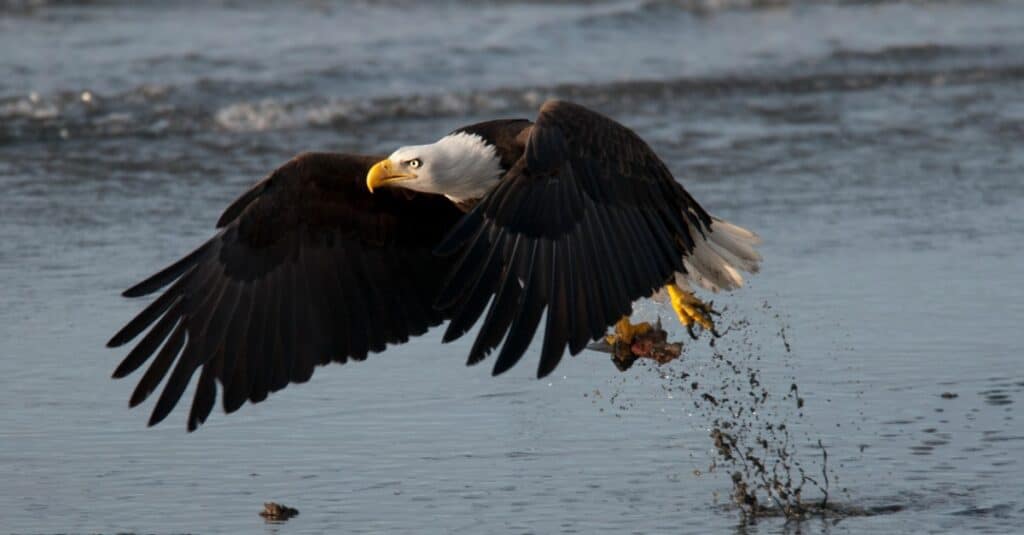
It’s typical for eagles to eat young hawks.
©iStock.com/Genfirstlight
Eagles and hawks do not see eye to eye nor wing to wing. Both birds are top predators who constantly seek to assert their dominance. This is why eagles are sometimes seen challenging fully grown hawks where other animals will cower.
Both birds share a common interest in prey animals. So, it’s not uncommon for eagles to challenge hawks for food, especially bald eagles and golden eagles. Eagles and hawks also get into fights over territories. Although these fights hardly result in eagles eating adult hawks, the resulting injuries could make either bird susceptible to other predators.
Preying eagles often go as far as attacking hawk nests to prey on baby hawks and smaller hawks. They have no reservations about feasting on smaller hawks who live in their area. So, it’s pretty typical for eagles to eat small hawks or younger hawks who haven’t grown strong enough to put up a fight.
Snakes

Rat snakes frequently target birds’ nests to eat eggs and chicks.
©Seth LaGrange/Shutterstock.com
Snakes are masters at stealing eggs from birds and chickens, baby birds, and even turtle eggs. Some species can also climb up trees, like brown snakes and rattlesnakes. Brown snakes are exceptionally skilled at wrapping themselves around trees and propelling themselves upwards.
Although hawks build their nests very high up in trees, they are still the target of climbing snakes. Climbing snakes can slither along branches of tall trees where they will happen upon a hawk or some other bird’s nest. Snakes don’t go hunting for hawk nests in particular. In fact, they will often settle for the nests of birds that live in the lower parts of a tree.
When climbing snakes find hawk nests without the mother hawk, they conveniently feed on the eggs and small hawks. Although snakes hardly attack adult hawks, younger hawks are inexperienced and defenseless against giant snakes. So they end up being meat for such snakes.
Owls
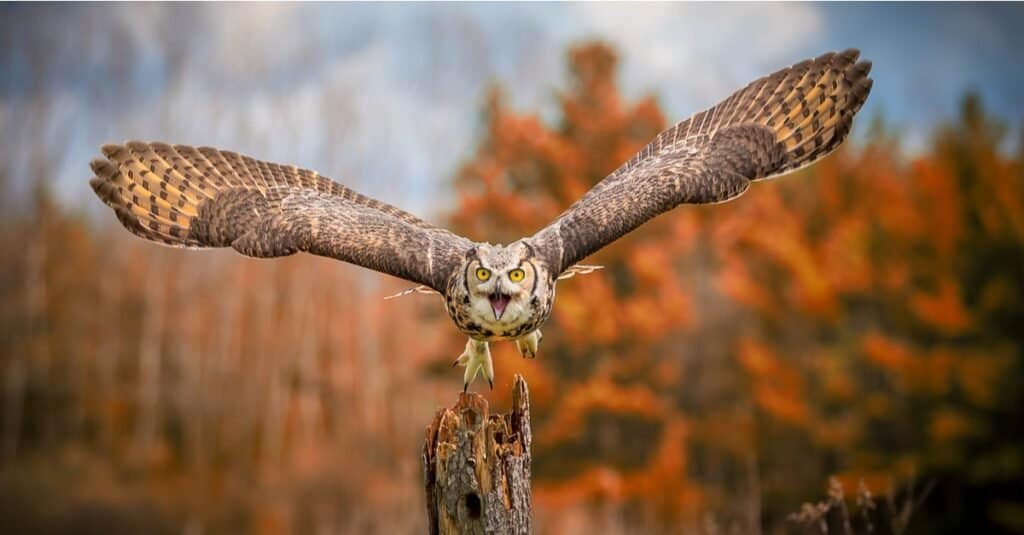
The great horned owl is one of the most dangerous birds because of its talons, beak, and aggressive way of hunting.
©Imran Ashraf/Shutterstock.com
Owls and hawks are enemies who compete for the same prey animals. They also share the same taste for nesting sites. Hence, they pose a threat to one another. Owls, in general, have a diverse diet. But the great-horned owl has a much more varied diet, one that accommodates hawks.
Both owls and hawks are known to attack the other’s nests and the babies in them. Although hawks are sturdy and agile birds, they hardly match the great-horned owl. The winner of a fight between a great-horned owl and a hawk could depend on the wingspan and size of the owl. The owl has strong nails and can exert maximum pressure to snap off the neck of its prey. When hawks or other birds get caught by owls, they become helpless. Owls strike fast and heavily, rendering their victim defenseless at a moment’s notice.
Raccoons
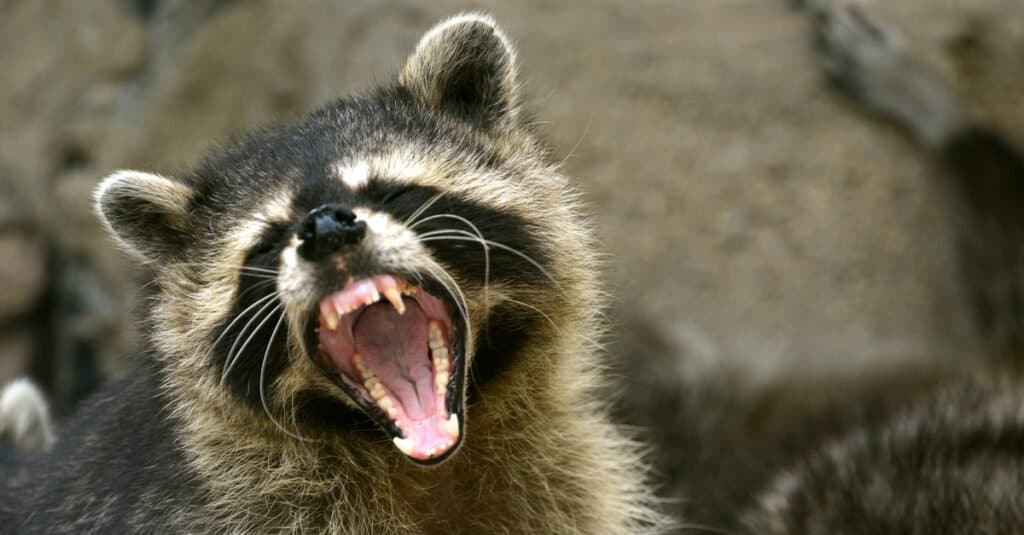
Various animals feature on a raccoon’s menu, hawk hatchlings included
©dangdumrong/Shutterstock.com
Raccoons feed on various animals and plants, including fruits, frogs, fish, crabs, and baby hawks. They are not a threat to the adult hawk population. However, they search for baby hawks and hawk nests to devour eggs. They are good climbers by nature and equally resilient.
Notably, not all raccoon raids end successfully. Occasionally, a raccoon misjudges the presence of a watchful parent and gets severely injured by the adult hawk. Still, raccoons find bird meat tasty and will take the risk if they are convinced that the older hawks are absent.
Foxes
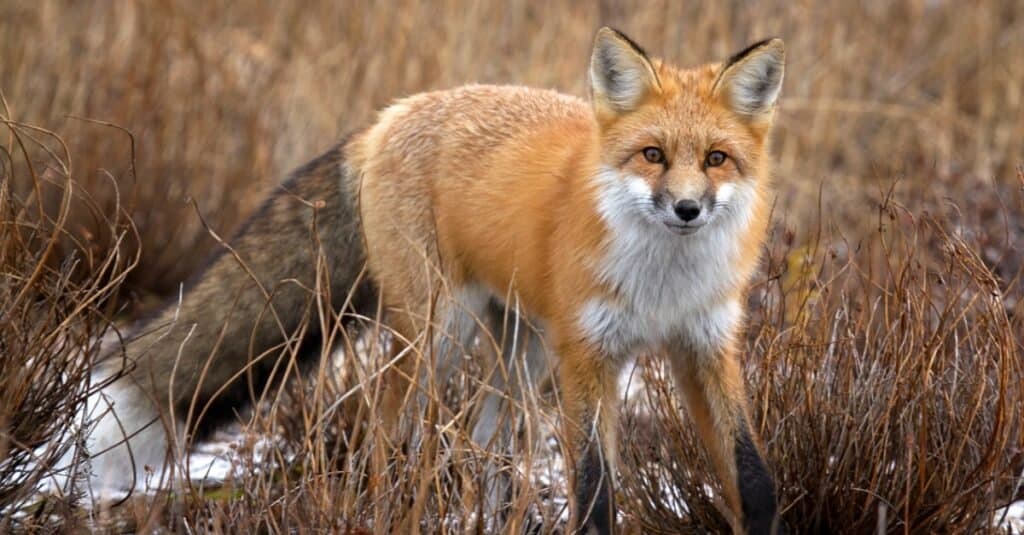
Wily predators, foxes are known to place hawk nests under surveillance and move in once the coast is clear.
©iStock.com/Lynn_Bystrom
Foxes are great hunters who are fond of eating rodents and some vegetation. They don’t make a habit of chasing hawks for food. Although a red fox may occasionally search for hawk nests when hungry. These foxes employ the same tricks as raccoons. They watch and stalk nests only to attack when it becomes vulnerable. They also prey on young hawks who are still learning how to fly. These immature hawks are not as confident and sometimes fly within reach of a pouncing fox.
How Do Hawks Defend Themselves?
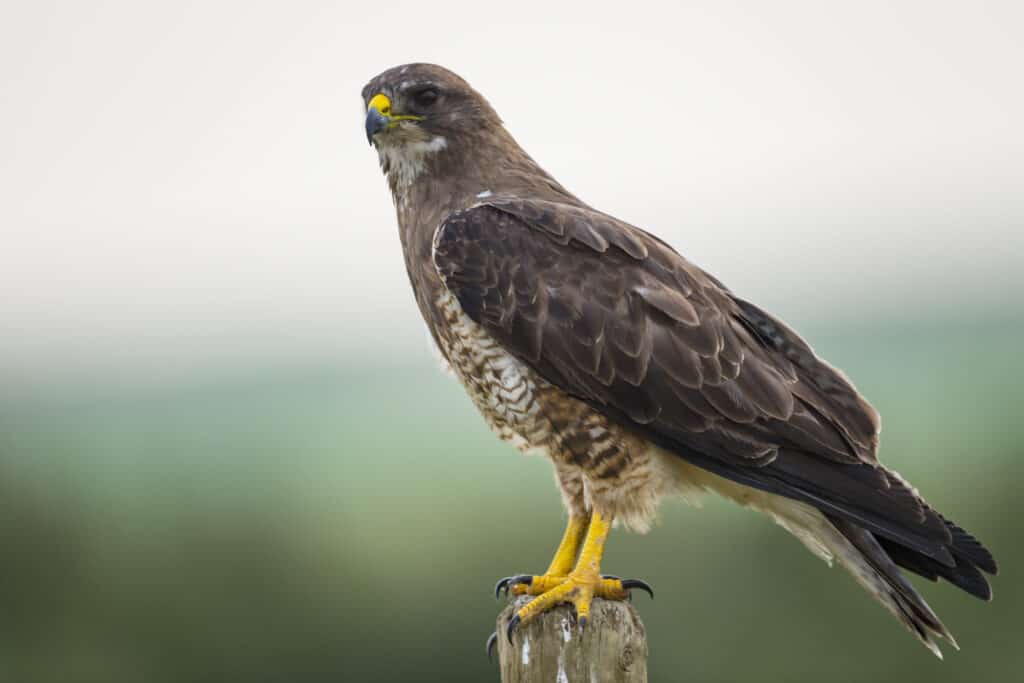
Hawks select tall trees and build their nests in their highest branches to ensure maximum safety.
©BGSmith/Shutterstock.com
Staying Out of Reach
Hawks build their nests on the highest branches of tall trees for a reason. The distance helps to discourage interference and the bird has a wide view of any impending attacks.
Talon Defense
Hawks, especially red-tail hawks, have sharp talons which they use to claw at animals who take them on. Depending on the age and strength of the hawk, its talons can do a lot of damage and discourage predators.
Interesting Facts About Hawks
- Hawks can see greater distances than a human. Not only are they able to see further, but their visual sharpness is eight times greater than a human’s vision.
- They have very high intelligence. Based on a scale of gaging avian IQ in terms of their inventive feeding habits, hawks were named the most intelligent birds.
- Hawks can see in color. Not only can they see color, but they can see in the ultraviolet range which means they can see colors that humans can not see.
- These birds have feelings. They have been described as deeply emotional, quick to show anger, and able to hold grudges for a very long time.
- Hawks mate for life. Mated pairs will remain together until one gets captured, seriously injured, or dies.
Summary of Hawk Predators
Here’s a recap of the animals that prey on and eat young and mature hawks.
| Number | Animal |
|---|---|
| 1 | Bigger Hawks |
| 2 | Eagles |
| 3 | Snakes |
| 4 | Owls |
| 5 | Raccoons |
| 6 | Foxes |
The photo featured at the top of this post is © Dennis Jacobsen/Shutterstock.com
Thank you for reading! Have some feedback for us? Contact the AZ Animals editorial team.







